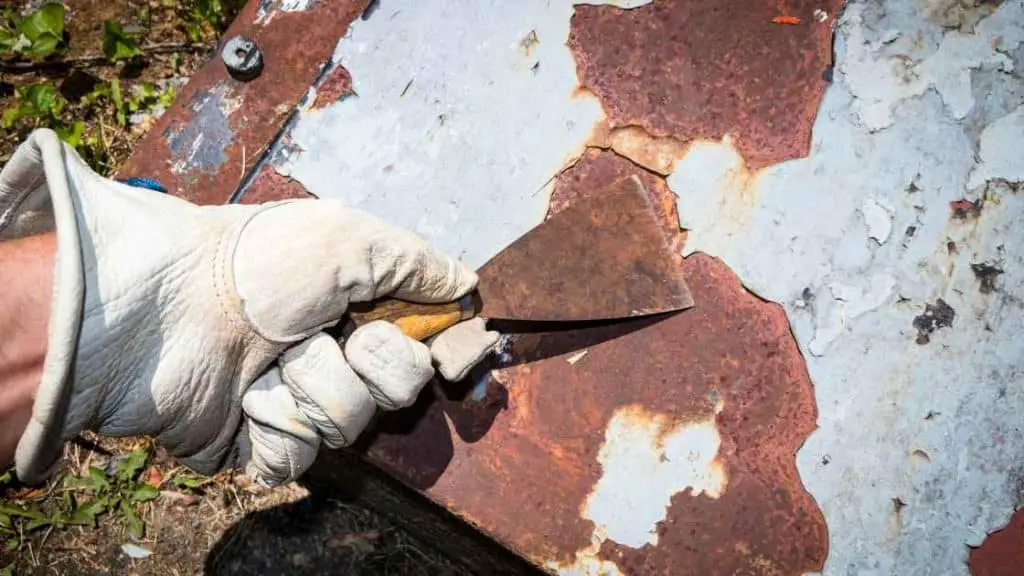Remove door rust by sanding the affected area, applying a rust inhibitor, and repainting. Begin by identifying all the rusted spots for treatment.
Battling rust on your doors preserves their functionality and aesthetic appeal. Rust, the orange-brown discoloration that occurs when metal begins to corrode, often appears on doors exposed to moisture or high humidity. The key to effectively tackling this issue lies in addressing it promptly before it spreads.
Finding rust on your home’s doors can be disheartening, but fear not – you can easily revive their appearance with a few simple steps. How to Remove Door Rust from Your Home? Follow this guide for a seamless process.

Begin by sanding down the affected areas, eradicating the rust. Then, employ a chemical inhibitor to neutralize any remaining traces of rust. Complete the restoration by applying a fresh coat of paint, restoring the door to its original splendor.
Ensure proper preparation, prioritize safety measures, and use the right materials to achieve a flawless, rust-free finish. By taking these steps, you not only protect your doors from further damage but also prolong their lifespan.
Introduction To Door Rust: Knowing The Fundamentals
The battle against door rust is a common plight for many. Over time, this pesky invader can compromise both the appearance and the integrity of doors.

Recognizing the signs and causes of rust is the first step toward maintaining a rust-free door. Let’s delve into the science behind rust and uncover common sources that lead to its formation on doors.
The Chemistry Of Rust And Its Impact On Doors
Rust is the result of a chemical reaction between iron, oxygen, and moisture. When these elements meet, they create iron oxide—the scientific name for rust.
The integrity of your door weakens as rust spreads. Without intervention, rust can cause serious damage to the door’s structure.
Common Causes Of Rust Formation On Doors
What triggers rust is vital for effective prevention. Factors range from environmental to poor maintenance. Here are some of the most common culprits:
- Humidity: High levels of moisture in the air accelerate rust development.
- Rain: Frequent exposure to water, especially if not dried quickly, encourages rust.
- Salt: Coastal regions or places using road salt in winter can hasten rusting.
- Chemicals: Harsh cleaning agents can strip protective coatings, increasing rust risk.
- Scratches: Damage to paint or coatings exposes the metal underneath to the elements.
Assessment And Preparation: Starting The Rust Removal Process
Removing rust from doors keeps them functional and improves your home’s look. Before starting, it’s critical to assess the situation and prepare with the right tools.

This ‘Assessment and Preparation: Starting the Rust Removal Process’ guide ensures your job is effective and safe.
Identifying The Extent Of Rust Damage On Doors
Determining rust severity is the first step. Inspect door corners and edges as rust often starts there. Look for signs of pitting, where rust has eaten through metal. This is more serious than surface rust which appears as flaky orange patches. Pitting might require professional attention.
Gathering Tools And Safety Equipment For Rust Removal
- Sandpaper or a wire brush for scraping rust
- A power sander for larger areas
- Protective gloves to keep hands safe
- Safety goggles to protect eyes from rust flakes
- Mask for avoiding inhalation of rust particles
- Rust-inhibiting primer and paint for aftercare
Ensure your workspace is well-ventilated. Collect drop cloths or newspapers to catch rust debris. Keep a first aid kit nearby as an additional safety measure.
Diy Rust Removal Techniques: Home Remedies And Solutions
Rust on door hinges, handles, and surfaces is not just unsightly—it can damage your doors over time. Luckily, you don’t need expensive chemicals to tackle rust. With common household items, you can remove rust effectively. Let’s explore some DIY rust-removal methods that can save you time and money.
Before calling in the professionals or buying harsh chemicals, try these simple home remedies to keep your doors rust-free.
Using Vinegar Solution To Treat Light Rust
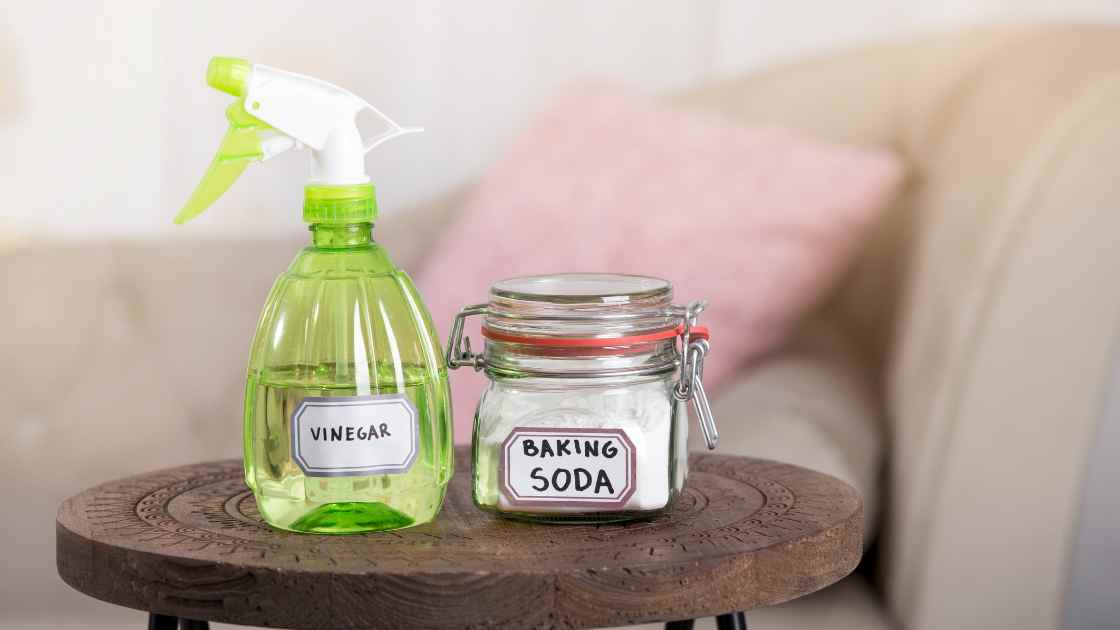
Vinegar is a mild acid perfect for eating away light rust. Follow these steps:
- Clean the area with soap and water.
- Soak a cloth in white vinegar.
- Wrap the rusted area with the soaked cloth.
- Leave it for a few hours or overnight.
- Scrub off the rust with a brush.
- Wipe the area clean.
Applying Baking Soda Paste For Rust Dissolution
Baking soda is another common household item with rust-busting abilities. Here’s what to do:
- Mix baking soda with water to make a paste.
- Spread it over the rusted areas.
- Let it sit for an hour or more.
- Scrub the paste with a brush or steel wool.
- Rinse and dry the door.
Mechanical Rust Removal: Manual Techniques And Tools
Removing rust from doors requires the right approach and tools. Mechanical methods offer a hands-on solution. They help restore doors to their former glory. Read on to learn how to use manual techniques and tools effectively.
Sanding: Choosing The Right Grit For Effective Rust Removal
Sanding is a direct method to get rid of rust. The key is using the correct sandpaper grit.
- Coarse Grit (40-60): Removes heavy rust.
- Medium Grit (80-120): Smoothens the rough edges.
- Fine Grit (150-220): Prepares surface for painting.
Start with a coarse grit. Work your way up to a fine grit. Ensure consistent pressure is applied during sanding. This method keeps the door smooth and ready for refinishing.
Wire Brushes And Steel Wool: Aggressive Rust Remediation
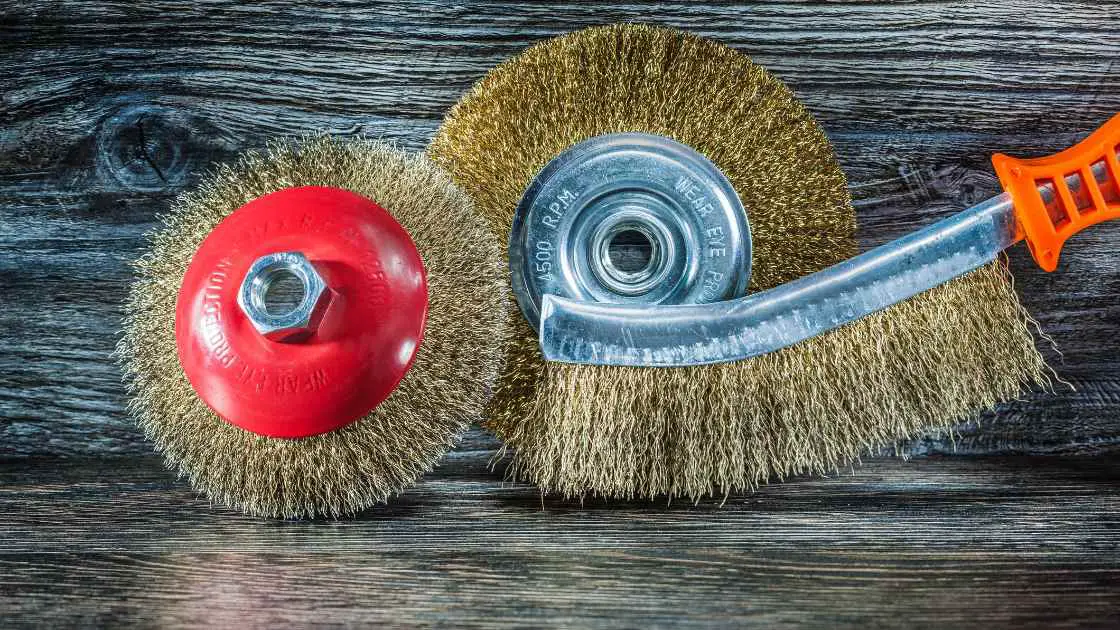
Wire brushes and steel wool are excellent for stubborn rust. They scrub off the rust with ease. Always wear gloves to protect your hands.
| Tool | Use |
|---|---|
| Wire Brush | Scrapes off heavy rust layers. |
| Steel Wool | Removes finer rust particles and polishes the surface. |
Move the brush or wool back and forth over the rusted area. Apply firm pressure for best results. For crevices, use smaller brushes to get into tight spaces. This technique often exposes clean metal.
Chemical Rust Removers: Commercially Available Options
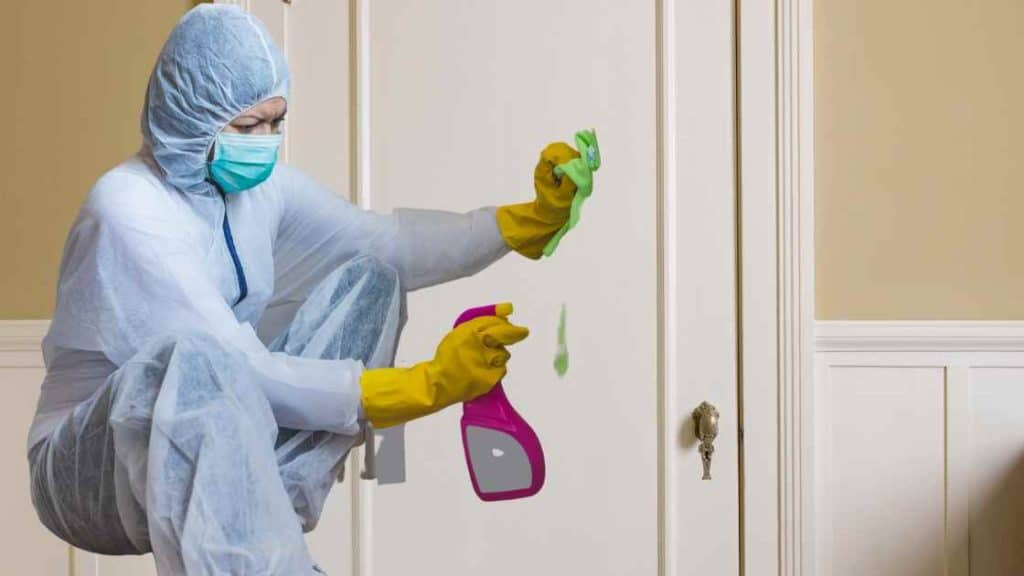
Rust on a door is more than an eyesore—it’s a cry for care. Feel confident when guests come knocking by addressing that unsightly rust. Tap into the power of chemical rust removers available on the market.
With a choice of gels, sprays, and soaks, these potent formulas make rust removal simple and effective for any homeowner.
Selecting The Best Chemical Rust Remover For Your Door
Choose wisely to ensure a radiant door without damage. Consider these:
- Type of Door Material: Compatibility is key.
- Rust Severity: Match the remover’s strength to your rust situation.
- Eco-Friendly Options: Go green to protect your environment.
- Safety Precautions: Prioritize your well-being with less toxic choices.
Step-by-step Guide To Applying Chemical Rust Removers
- Prepare Your Work Area: Lay down protective sheets and wear gloves.
- Apply Rust Remover: Adhere to the instructions for best results.
- Wait Patiently: Allow the chemicals to penetrate and dissolve the rust.
- Scrub Gently: Use a brush with soft bristles to avoid scratches.
- Rinse Thoroughly: Wash off the chemicals with clean water.
- Dry Completely: Prevent future rust by eliminating moisture.
Electrolysis Method: Using Electric Current For Rust Removal
Imagine transforming your rusty doors back to their original glory. The Electrolysis method makes it possible! This process uses electric current to say goodbye to rust without scrubbing for hours. Ready to see how? Let’s dip in.
Setting Up An Electrolysis System For Rusty Doors
Setting up your own electrolysis system at home is simpler than you think. Gather these must-have items:
- A plastic tub large enough to fit the door panel
- Car battery charger
- Water to fill the tub
- Washing soda (Sodium Carbonate)
- Sacrificial metal, like steel rebars or iron
- Clamps and wires
Follow these easy steps:
- Fill the tub with water, avoiding spills.
- Mix in one tablespoon of washing soda per gallon for conduction.
- Submerge the rusty door, and ensure it doesn’t touch the sacrificial metal.
- Connect the positive clamp to the sacrificial metal, outside the water.
- Attach the negative clamp to the door, securely.
- Power up the charger and watch the rust detach.
Keep the setup running, checking progress regularly. Patience yields a rust-free door.
Safety Measures And Precautions For Using Electrolysis
Safety first! When working with electricity and chemicals, take these precautions:
- Wear gloves and eye protection to avoid injuries.
- Work in ventilated areas to breathe easily.
- Ensure no flammable materials are nearby.
- Never touch the water during electrolysis. It’s electrified!
- Check connections to avoid short circuits.
- Follow the instructions on your charger to prevent overloads.
Turn off the system before removing the door. Now marvel at a rust-free surface!
Protective Coatings And Primers: Preventing Future Rust
After removing rust from your door, it’s important to protect it from future problems. This is where protective coatings and primers come into play. They guard the metal against moisture and other rust-causing factors. In this section, we will explore how to choose the right protective coating and apply primer for long-lasting rust prevention.
Choosing The Right Protective Coating For Your Door
Protective coatings shield your door from the elements, sealing out moisture and air. Look for rust-inhibitive paints when selecting a coating. These contain corrosion inhibitors for extra protection. Always check the paint’s compatibility with your door’s material.
- Epoxy coatings offer a tough, protective shell.
- Urethane paints resist chipping and peeling.
- Oil-based paints form a barrier against rust.
Ensure the product you choose is suitable for exterior use if your door is exposed to outdoor conditions.
Applying Primer: Tips For Maximum Rust Protection
Before painting, a primer is essential. It helps the paint stick better and lasts longer. A rust-converting primer can turn rust into a paintable surface. Here’s how to apply primer effectively:
- Clean the door surface thoroughly.
- Sand it down to create a smooth base.
- Apply a thin, even layer of primer.
- Allow it to dry completely before painting.
Use a brush or roller designed for metal surfaces to get a smooth finish.
Remember: Patience is key in the drying process. Rushing can cause the coating to fail.
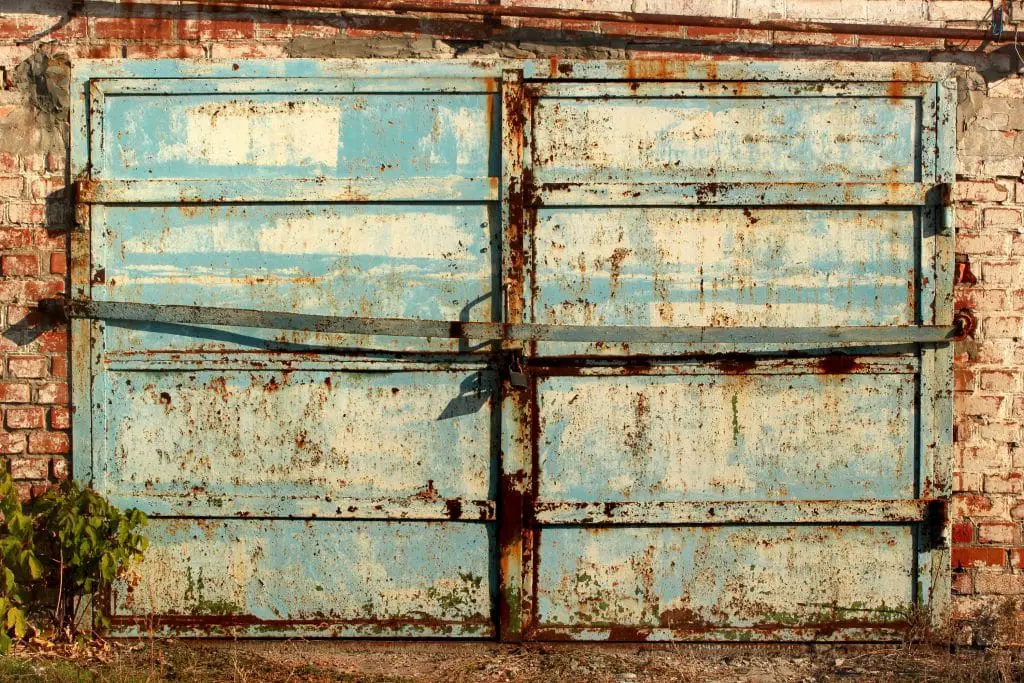
Post-removal Treatment: Finishing And Aesthetics
After removing rust from a door, a proper finish maintains its appearance and prevents future corrosion. This section covers the steps for painting and sealing your door. These steps ensure a smooth, clean outcome that stands the test of time.
Painting: Selecting Rust-inhibiting Paint For Your Door
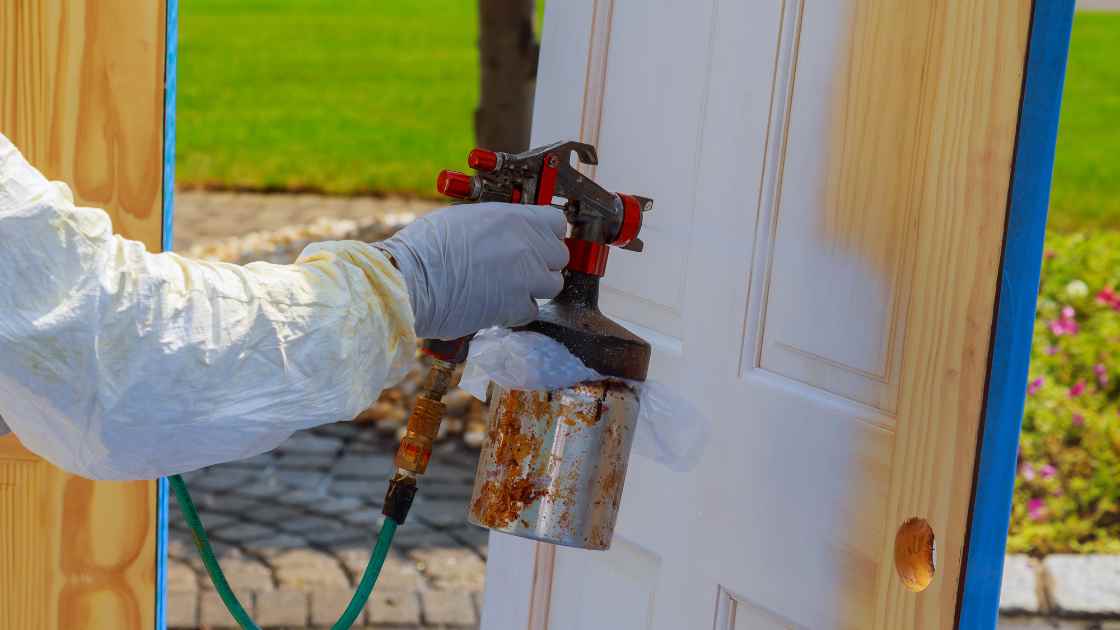
Choosing the right paint is vital for your door’s longevity. Rust-inhibiting paint forms a protective barrier, significantly reducing future rust risks.
Here are essential tips for paint selection:
- Quality matters: Pick high-grade rust-inhibiting paint.
- Oil-based options: These are durable and provide good coverage.
- UV resistance: UV-resistant paints prevent fading and wear from sunlight.
After selecting the appropriate paint:
- Clean the door surface thoroughly.
- Apply a primer designed for metal surfaces.
- Cover evenly with rust-inhibiting paint.
- Allow sufficient drying time between coats.
Sealing Edges And Crevices To Avoid Rust Reformation
After painting, sealing edges and crevices is vital to block moisture penetration. This step helps avoid rust reformation.
Consider these sealing tips:
- Use a sealant: Select a waterproof sealant suitable for metal.
- Focus on joints: Seal all meeting points and edges to create a barrier.
- Inspect regularly: Look for cracks or peeling and reseal as needed.
Maintenance Tips: Keeping Your Doors Rust-free
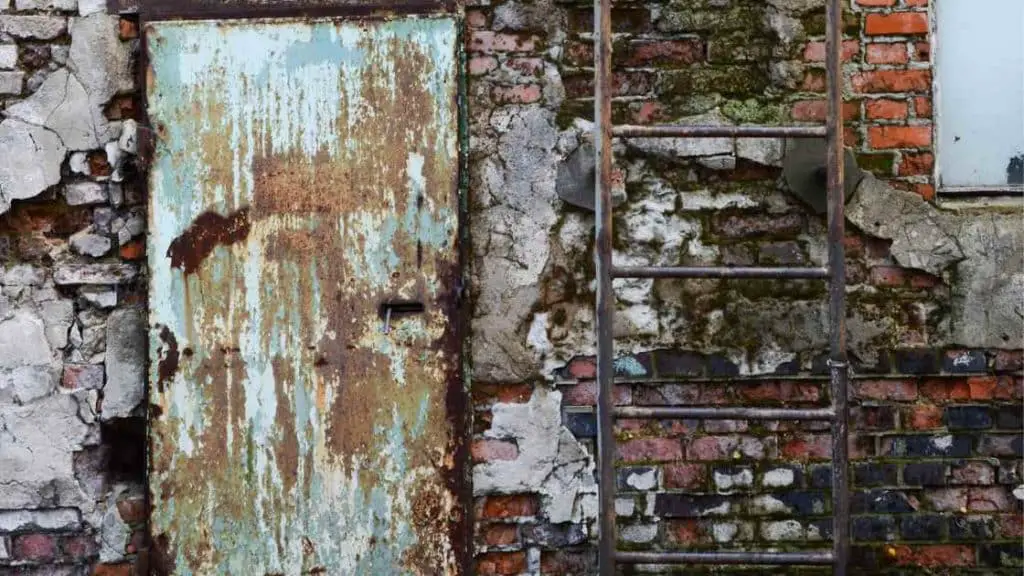
Preventing rust prolongs door life. Regular maintenance keeps doors looking new. Follow these steps to safeguard against corrosion and maintain durability.
Routine Checks And Cleaning Practices For Longevity
Inspect doors often for early rust signs. Catching rust early makes removal simpler.
- Wipe down doors with soapy water regularly.
- Rinse with clean water to remove soap residue.
- Dry the surface thoroughly after washing.
- Use a soft cloth or sponge to avoid scratches.
Commit to monthly inspections and clean-ups. This will keep doors in prime condition.
Using Lubricants And Corrosion Inhibitors For Maintenance
Lubricants and corrosion inhibitors play a crucial role. They keep door components moving smoothly and prevent rust.
- Apply silicone-based lubricants to hinges.
- Use corrosion inhibitors on metal surfaces.
Choose products suited for the door’s material. Reapply every few months or as needed.
Professional Rust Removal Services: When To Call The Experts
Sometimes, door rust proves too stubborn for DIY fixes. The expertise of a professional can save time and ensure the job is done right.
Scenarios That Merit Professional Assistance
Recognizing when to call in the experts is key to maintaining the integrity of your doors.
- Extensive Corrosion: When rust covers a large area and penetrates deeply.
- High-Value Doors: Professional services are essential for preserving expensive doors.
- Lead Paint Concerns: Older doors may have hazardous materials like lead paint.
- Commercial Needs: Businesses should ensure doors remain presentable and functional.
What To Expect From A Professional Rust Removal Service
Professional rust removal offers a thorough approach to tackling door rust.
- Assessment: Experts evaluate rust damage and choose the best treatment.
- Preparation: They shield surrounding areas to prevent damage during the process.
- Rust Treatment: Professionals use commercial-grade products for rust removal.
- Finishing: Services may include priming, painting, and sealing the door.
- Maintenance Advice: Aftercare tips to keep doors rust-free are provided.
Case Studies: Successful Rust Removal Projects
Doors stand as silent guardians to our homes and offices, but rust can diminish their integrity. Across the globe, many have waged war against the stubborn crimson scourge.
Here, we celebrate triumphs over door rust, revealing effective strategies and valuable insights gleaned from real-life battles.
Before And After: Documenting Door Rust Removals
Detailed visual records powerfully demonstrate rust removal successes. Before-and-after images are front and center in our case studies spotlight:
- Frank’s Hardware Store: Transformed a rusty warehouse door to pristine condition.
- Linda’s Vintage Shop: Restored a classic storefront with non-toxic rust removers.
- Green Living Complex: Used eco-friendly techniques on apartment complex doors.
| Project | Rust Severity | Method Used | Time Taken |
|---|---|---|---|
| Frank’s Hardware Store | Heavy | Sandblasting & Painting | 3 Days |
| Linda’s Vintage Shop | Moderate | Natural Acids & Sealant | 2 Days |
| Green Living Complex | Light | Manual Scrubbing & Coating | 1 Day |
Lessons Learned From Challenging Rust Remediation Efforts
Every rust removal process comes with its learnings. The harshness of chemicals, the importance of protective gear, and the patience required for delicate operations stand out as key takeaways.
- Selecting the right rust remover for the job is essential.
- Test a small area before full application to ensure metal safety.
- Adequate ventilation is a must when working with chemicals.
- Repeated treatments may be necessary for extensive damage.
- Proper maintenance post-removal extends the life of the door.
Summarizing Rust Removal Insights And Best Practices
Diving into the conclusion on rust removal from doors, this post consolidates the insights and best practices found. Whether metal doors or fixtures, keeping rust at bay is pivotal for longevity and functionality.
Recap Of Effective Rust Removal Methods
A quick review of methods shows various solutions we’ve discussed:
- Chemical rust removers: Effective but requires safety gear.
- Vinegar soak: A natural approach for smaller items.
- Sanding: Manual rust scraping for surfaces.
- Wire brush: For stubborn, flaky rust patches.
- Protective finishes: Seal doors to prevent future rust.
Final Tips And Words Of Caution For Diy Enthusiasts
Embrace the DIY spirit, but remember these tips:
| Tips | Caution |
|---|---|
| Test a small area first. | Chemicals can harm the skin. |
| Wear protective gear. | Rust particles irritate. |
| Follow product directions. | Mixing chemicals is risky. |
| Do regular maintenance. | Over-sanding can damage. |
- Preparation is key: Gather all tools and materials before starting.
- Safety first: Wear gloves, masks, and goggles to protect against hazards.
- Dispose of waste: Ethically discard used chemicals and rusted scraps.
Every action counts in maintaining door quality. Follow steps carefully to ensure success and remember, regular upkeep is the best practice to keep rust away. Stay safe and enjoy a rust-free environment.
Frequently Asked Questions For How To Remove Door Rust
Can Vinegar Remove Rust From Doors?
Yes, vinegar can help remove rust from doors. Its acetic acid works to dissolve rust. Simply apply white vinegar directly to the rusted area. Let it sit for a few hours and then scrub off with a brush.
What’s The Best Rust Remover For Doors?
The best commercial rust removers for doors include products like WD-40, Evapo-Rust, or CLR. These are specifically formulated to target and dissolve rust, offering a simple application process and effective results.
How To Prevent Door Rust From Reoccurring?
To prevent rust from returning, keep doors dry and well-maintained. Apply a rust-inhibiting primer and paint. Regularly inspect for scratches or damage, and address them promptly to prevent rust development.
Can Sandpaper Be Used To Remove Door Rust?
Yes, sandpaper can be used to remove rust from doors. Use medium-grit sandpaper to scrub the rust gently. Afterward, use fine-grit sandpaper to smooth the surface before repainting or sealing.
How do you get rust off a door?
To remove rust from a door, start by scrubbing the affected area with a mixture of equal parts white vinegar and baking soda using a wire brush or steel wool. Once the rust is loosened, wipe the door clean and apply a rust-inhibiting primer followed by a coat of rust-resistant paint for long-lasting protection.
How do I pick up a door in Rust?
To pick up a door in Rust, approach the door and hold the “E” key to access the context menu. From there, select the option to pick up the door, and it will be added to your inventory for placement elsewhere.
Conclusion
Bidding farewell to door rust is simpler than you think. With the right tools and techniques, like sandpaper, rust-removal solutions or homemade mixtures, and a fresh coat of paint or sealant, you can restore your doors to their original glory.
Remember, regular maintenance is key to preventing future rust. Take action now, and keep your doors pristine and functional for years to come.

